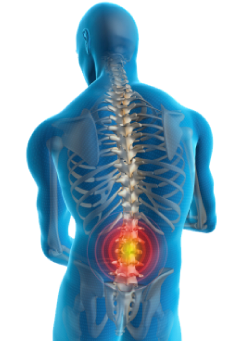Back pain is one of the most common and persistent health problems people face, with millions of individuals experiencing discomfort on a daily basis. Whether it’s caused by a herniated disc, degenerative disc disease, or other spinal conditions, the pain can significantly impact daily life.
Spinal decompression therapy offers a non-invasive and effective solution for alleviating pressure on the spine, providing relief for many individuals suffering from chronic back pain.
What is Spinal Decompression Therapy?
Spinal decompression therapy is a type of non-surgical treatment designed to alleviate pressure on the spine, specifically the discs between the vertebrae. The treatment uses a specialized motorized table to apply controlled traction to the spine, gently stretching it to relieve the pressure on spinal discs and nerves. This process is intended to help treat conditions such as herniated discs, bulging discs, sciatica, and degenerative disc disease.
When a disc becomes damaged or misaligned, it can place pressure on surrounding nerves, leading to pain, numbness, and other symptoms. Spinal decompression therapy helps reverse this pressure by creating negative pressure within the affected area. This negative pressure can help pull the herniated disc back into place, providing relief from nerve compression and promoting the body’s natural healing process.
How Spinal Decompression Therapy Alleviates Pressure
Spinal decompression therapy works by gradually stretching the spine, which creates space between the vertebrae. This process helps to:
- Relieve Nerve Compression
A herniated or bulging disc can compress nearby nerves, causing intense pain and discomfort. By applying controlled traction to the spine, spinal decompression therapy creates more space between the vertebrae, reducing the pressure on these nerves. This helps alleviate pain caused by nerve compression. - Promote Healing of the Discs
The negative pressure generated during spinal decompression encourages the flow of oxygen, water, and nutrients into the affected discs. This promotes the healing process by facilitating the body’s natural ability to repair damaged tissue and reduce inflammation. In essence, spinal decompression therapy creates an environment where the body can heal itself. - Reduce Inflammation
Inflammation is a common cause of back pain, especially in conditions like herniated discs or degenerative disc disease. By improving circulation and promoting healing, spinal decompression therapy helps reduce inflammation in the affected area, providing long-term relief from chronic pain. - Restore Proper Spinal Alignment
Misalignments in the spine can contribute to back pain and other health issues. Spinal decompression therapy works to gently realign the spine, reducing stress on the discs and the surrounding muscles. This realignment helps restore proper function to the spine, reducing pain and discomfort.
What Happens During a Spinal Decompression Session?
A typical spinal decompression therapy session involves lying on a motorized table designed to gently stretch the spine. The chiropractor will customize the settings to target the specific area of pain. The process usually lasts between 20 to 30 minutes, with patients experiencing alternating periods of traction and relaxation.
During the session, the chiropractor will monitor your comfort and adjust the treatment as needed. The therapy is non-invasive and typically pain-free, though some individuals may experience mild discomfort as the spine stretches. Many patients report feeling relaxed during and after the treatment, with some noticing immediate relief from pain.
Conditions Treated by Spinal Decompression Therapy
Spinal decompression therapy is most effective for individuals dealing with specific spinal conditions. These include:
- Herniated or Bulging Discs: These conditions occur when the soft, gel-like center of a disc pushes through a crack in the outer layer, putting pressure on surrounding nerves. Spinal decompression therapy can help retract the disc and relieve the pressure on the nerves.
- Degenerative Disc Disease: This condition involves the breakdown of the discs in the spine, often causing pain and stiffness. Spinal decompression therapy can help relieve the pressure caused by these damaged discs, improving mobility and reducing discomfort.
- Sciatica: When the sciatic nerve becomes compressed, it can cause pain that radiates down the leg. Spinal decompression therapy helps relieve pressure on the sciatic nerve, providing relief from the pain and discomfort associated with sciatica.
- Facet Joint Syndrome: This condition occurs when the facet joints in the spine become irritated or inflamed, leading to pain and stiffness. Spinal decompression therapy can reduce inflammation and alleviate the pressure on these joints, providing relief.
Who Can Benefit from Spinal Decompression Therapy?
Spinal decompression therapy is suitable for individuals who are suffering from chronic back pain or neck pain caused by spinal conditions. However, not everyone is a candidate for this treatment. It is important to consult with a chiropractor to determine if spinal decompression is the right treatment for you.
Spinal decompression therapy is particularly beneficial for individuals who prefer a non-surgical approach to pain relief. It is also an excellent option for those who have not found relief from other conservative treatments, such as medication or physical therapy.
For patients with advanced conditions, such as osteoporosis or spinal fractures, spinal decompression therapy may not be suitable. Your chiropractor will conduct a thorough evaluation and provide personalized recommendations based on your unique needs.
How to Get Started with Spinal Decompression Therapy
If you’re struggling with chronic back or neck pain and are considering spinal decompression therapy, the first step is to consult with a trusted chiropractor. At Gentle Chiro, their team will assess your condition and create a treatment plan tailored to your specific needs. They use a variety of chiropractic techniques, including spinal decompression therapy, to provide effective, non-invasive pain relief.

